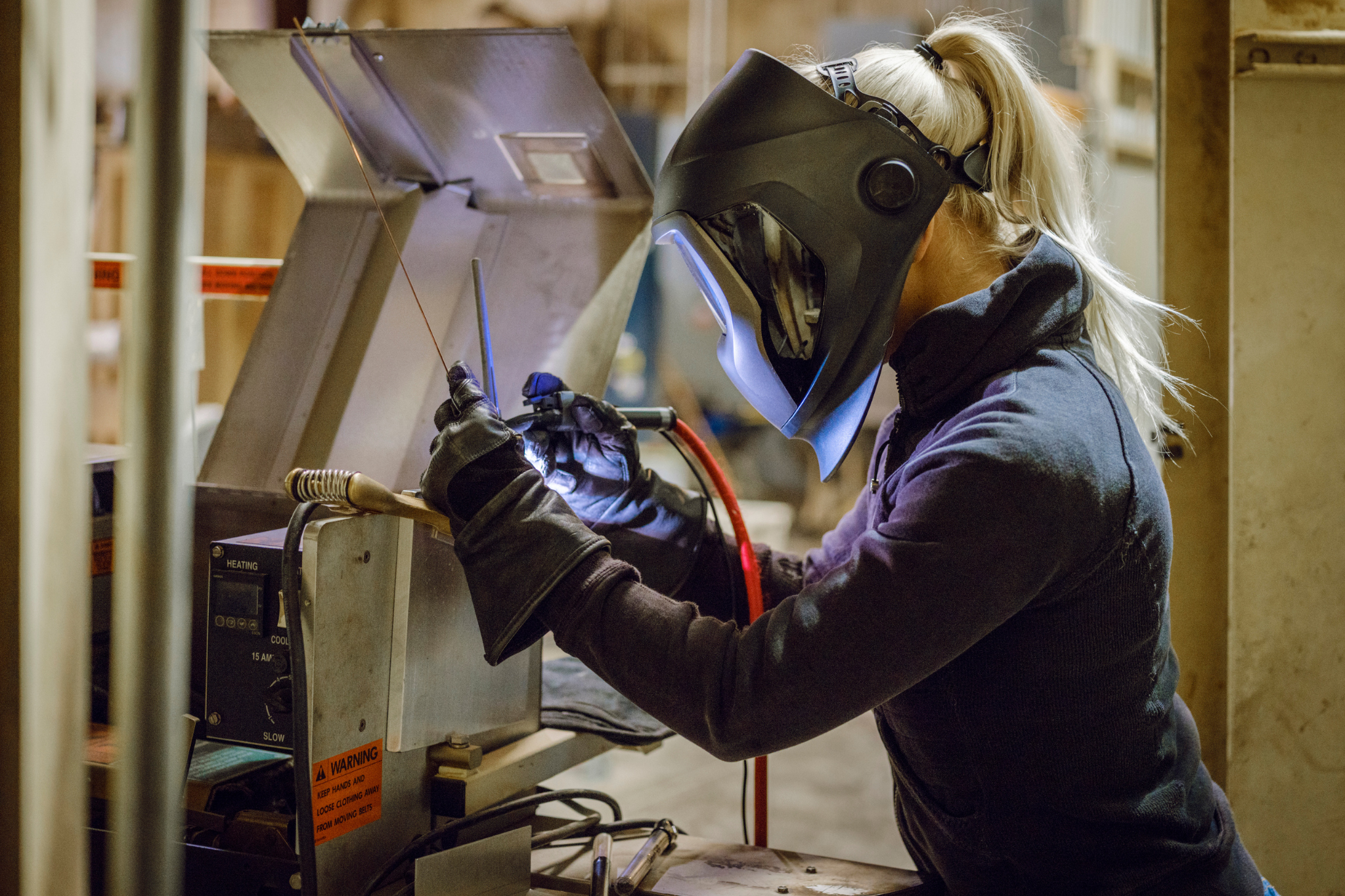In 2006, I sat in my university’s largest lecture hall for the orientation meeting. My undergraduate degree at Curtin University in Perth, Western Australia, in Mechanical Engineering had a large intake that year, with more than 300 students combined who would be specialising in Electrical, Mechanical, Civil, Software and Mechatronics for the first year. One thing stood out to me on this day –there were only 13 females, all sitting together, looking awkwardly out of place. This was just 15 years ago!
After graduation, I received a role at BHP, the world’s largest mining company as a graduate engineer. They ran a graduate program where new professionals received a 2-year structured program that would set students up for their future career in BHP. It was an exceptional program and from memory the entire intake was fairly gender balanced. But when it came to engineers in the intake specifically, it was heavily male dominated. Now, this kind of makes sense – the company needed engineers but there were so few women graduating from universities that even the best-intentioned intake program had a problem here.
In 2021 the world has improved. The percentage of females studying engineering Curtin now has grown 47% since 2006, great news. Meanwhile, BHP is running one of the world’s premier diversity campaigns, from 17% female workforce representation 5-years ago to 29% last year. But while the progress is good, is this really that impressive? I’d honestly hoped to see a bigger improvement than this, the goal is to be gender balanced by 2025.
Starting and running my own company drew my attention to the importance of inclusive workplaces and selling ergonomic technology solutions to a range of industries, exposed a lot of variety.
In the United States, the healthcare sector has the highest representation of females, over 70%, however, warehousing has only around 30% of females with construction heavily male dominated with only just over 10% females and mining hovering around the 15% mark.
I’ve noticed, as a rule, once the work gets more physically demanding, the rate of females in the role decreases. And as most of the workforce is ‘blue collar’, too many of these positions have physical requirements that prevent most of the population from successfully doing the role.
In 2019, just 15.4% of people employed in the industry sector were female, by far the lowest sector when it comes to gender balance.
I believe the true solution to this problem began over 200-years ago with the start of the industrial revolution, but employers have not yet really taken full advantage of this to hit their diversification goals. Using machines to replace human (or in cases, animal) labour has revolutionised productivity. If we expand this to include new tools, new methods, processes, we’ve created numerous new ways in the past two centuries to do work smarter and more efficiently, relying less on human effort and more on equipment.
If we double down on this strategy, we can open more roles to more of the population. If a role can avoid a person lifting a 30-pound load multiple times an hour, because now they have a tool that can transport this load, then we no longer need worry about the person not being able to do this. If a maintenance task can be redesigned to use a tool to separate two components that frequently get stuck together rather than using human force, then more people can do the role. Work smarter, not harder. And the best thing is that very frequently these improvements often result in a productivity improvement too.
Now, with industry 4.0 complementing the shift into industry 5.0– being the state of using modern smart technologies, M2M communication, internet of things (IIot), industrial cyber-physical systems (I-CPS) and the merging of these technologies into the collaboration between human and machine– we are furnished with large possibilities and opportunities to work well. Gathering data from the real-world and transmitting it to the virtual world for decision-making. These technologies track and measure activity, injury and physical demand risks and provide objective data for control implementation or intervention/workplace redesign to decrease loads and thus open roles to a wider population – safely.
Referring to my observation stated earlier and how, as the work gets more physically demanding, the rate of females in the role decreases; by using technology you can measure risk for an individual person, a complete job role or even a particular task, it doesn’t have bias.
When it comes to individual abilities, historically, standards have looked at the weight of the object being handled. “This weight is suitable for 75% of males” is something I never want to hear again. Coming across this time and time again was the initial motivator to put our heads together and design an algorithm that relies on a neural network trained on the actual effort required by the person to make the movement. We had hundreds of people (more women than men) make several movements moving objects, while wearing our sensor.
Our Medical Doctor & Physiotherapist on the team, Dr. Anastasia Vasina, labelled each movement as either high or low intensity. Capturing more than 10,000 movements, the data science team extrapolated these labelled movements to create a neural network that can now predict the intensity of a movement for an individual person wearing a sensor. This algorithm does not care about the weight of the object, it does not care if you are male, female, it doesn’t care about anything other than measuring how intense the movement was for the person.
When it comes to measuring a particular task, AI vision processing technologies can provide detailed analysis reports while multiple sensors can provide overview of risks for departments or roles or lines with all data captured being associated back to job roles & tasks within an online dashboard. This allows safety teams to analyse the data to work out what work is causing risk and where, on a macro and micro level. Controls can then begin to be implemented. Organisations can be truly focussed on reducing ergonomic risk and physical requirements, opening roles to more of the population and ensuring they will be a success in the role –safely.
I believe organisations who are still at the infancy stage of their gender diversity journey are focussed on hitting hiring quotas rather than drawing attention to the jobs & tasks at hand. AI-driven technologies can now assist in making sure a wider range of people can genuinely do the role by highlighting the factors and physical requirements that prevent people from being successful. Work smarter, not harder, know the task requirements, know the physical demands of the role and redesign where required to give more people an opportunity to work for you in all areas.









